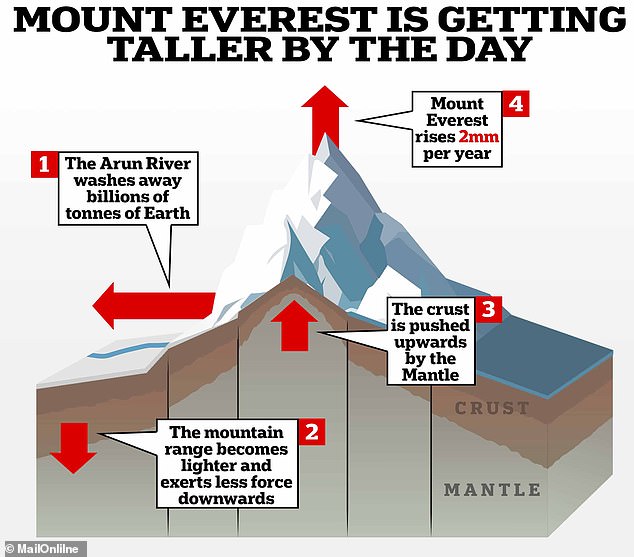At 8,849 meters (29,032 feet), reaching the summit of Mount Everest has long been considered one of mountaineering’s greatest challenges.
However, climbers of the future could struggle even more as experts reveal the world’s tallest mountain is growing by the day.
Researchers at University College London found that Mount Everest has already grown by between 15 and 50 m (49-164 ft) in the last 89,000 years.
They claim that this unexpected growth is due to the fact that a nearby river erodes so much material that the mountain becomes lighter and rises at a rate of 2 mm per year.
Co-author Adam Smith says: “Mount Everest is a remarkable mountain of myth and legend and it is still growing.”
Mount Everest is growing at a rate of 2mm per year, researchers say. As erosion clears the mountain, the liquid mantle pushes it upward.
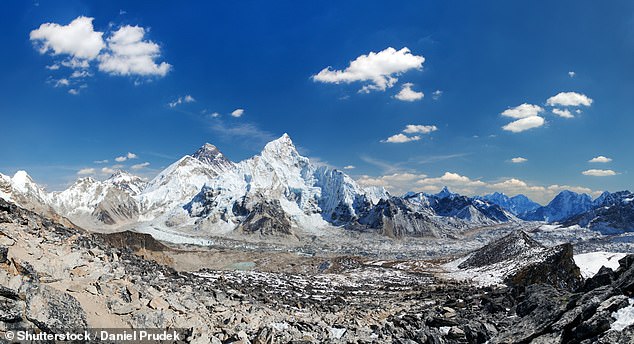
At 8,848 meters (29,032 feet), Mount Everest is the world’s tallest mountain, but researchers now say it is growing even higher, 2 mm per year.
Generally, the largest peaks within a mountain range are all about the same size, perhaps only varying by a few hundred meters at most.
Smith told MailOnline: “Everest is 250m higher than K2, the world’s second highest peak, but K2 and the other peaks are only 50 to 100m higher than the subsequent highest peaks. In this “In this sense, Everest is an anomaly.”
Not only is Everest unusually tall, but scientists now know that it is growing every year.
GPS instruments show that Everest’s peak rises at about 2 mm per year.
But until now, there has been no clear explanation for why Everest is so much taller than its peers or how it continues to grow.
The answer, as the researchers write in Nature Geoscience, actually has nothing to do with Everest itself, but with the action of a nearby river.
Co-author Dr Jin-Gen Dai says: “There is an interesting river system in the Everest region: the Arun River, upstream, flows east at high altitude with a flat valley.
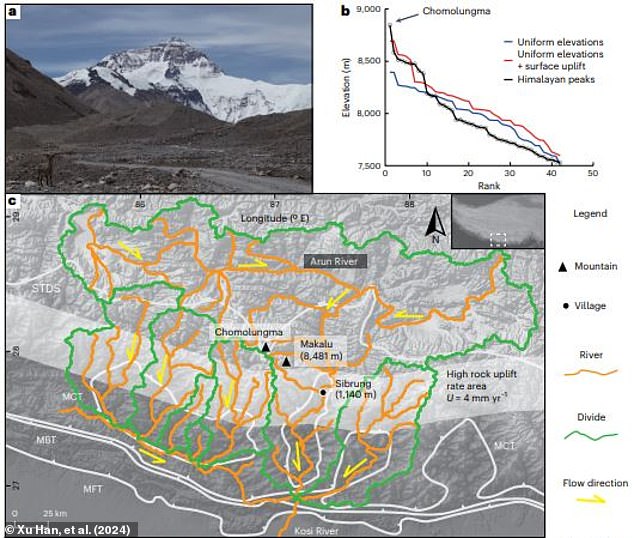
Researchers have found that erosion from rivers (illustrated in orange) around Everest, which here is labeled Chomolungma using the Tibetan name, is causing the mountain to rise each year.
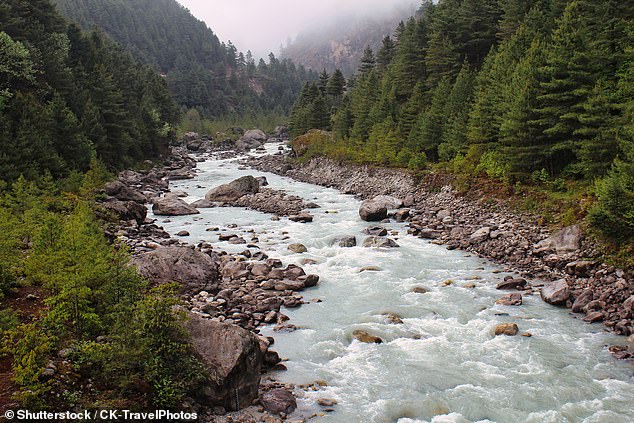
89,000 years ago, the gentle Arun River merged with the steep Kosi River (pictured), greatly increasing its erosive power and allowing it to remove billions of tonnes of rock and sediment from the area around Mount Everest.
“It then turns abruptly south like the Kosi River, dropping in elevation and becoming steeper.”
By studying erosion rates of rivers in the region, Dr. Dai and his colleagues discovered that these two rivers, the Arun and the Kosi, merged about 89,000 years ago.
When this happened, much more water was channeled through the steep, narrow Kosi River, dramatically increasing its erosive power.
While it may not be obvious on human time scales, over thousands of years this has led to the removal of billions of tonnes of rock and sediment from the area around Everest.
Slowly, this lightening process means that Everest literally floats upward through a process called “isostatic rebound.”
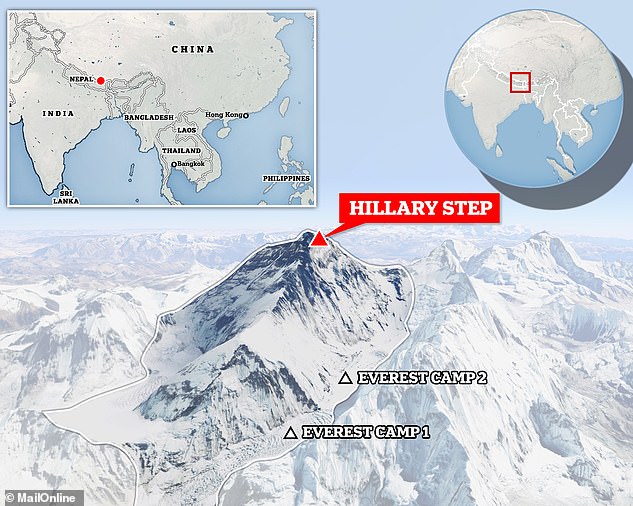
Mount Everest (pictured) is about 250 m (820 ft) higher than the next highest mountains. Researchers now think this could be due to the effects of nearby river systems.
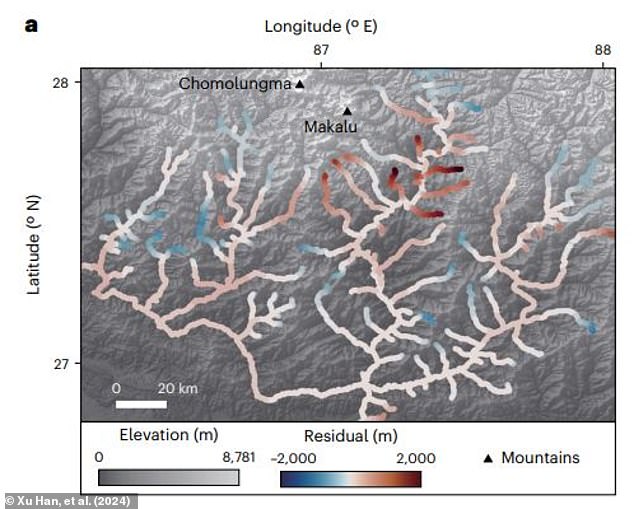
As the Arun and Kosi rivers erode the material around the mountains, they become lighter and float higher on the liquid mantle beneath the Earth’s crust. This map shows how high erosion areas (red) are near the Everest (Chomolungma) and Makalu mountains.
Mr Smith explains: ‘The crust, the outermost layer of the Earth, “floats” on the mantle, which is a semi-liquid layer beneath the crust.
“This is similar to how icebergs float in water.
“The lighter or less dense a material is, the higher it floats in the water or mantle.”
Smith says you can think of the area around Mount Everest as a pool float sitting on the surface of the water.
If you put weights on the float, the force of gravity will be stronger than the force of the water pushing up and the float will sit lower in the water.
But, if you gradually remove some of those weights, you will notice that the float gradually rises.
“This has happened with Everest, as material close to Everest has been removed causing uplift or isostatic rebound,” adds Mr Smith.
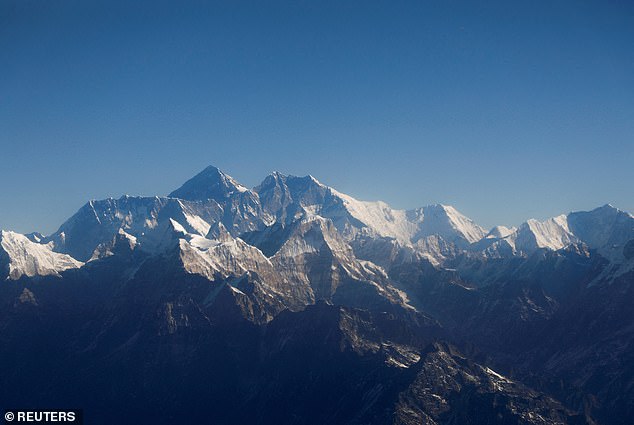
A process called isostatic rebound may explain why Everest is significantly higher than the other peaks in the Himalayas (pictured)
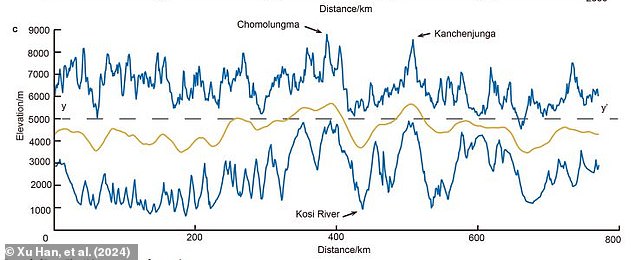
This diagram shows the highest (top) and lowest (bottom) elevation areas in the Himalayas. You can see that the highest points of Chomolungma (Everest) and Kanchenjunga are the closest to the low point of the Kosi River.
Over the 89,000 years since the Kosi and Arun rivers merged, they have removed enough weight to raise Everest between 49 and 164 feet (15-50 m), researchers say.
Since the material is removed so close to Everest, the team believes this may be part of the reason Everest is so much higher than peaks like K2.
But although the mountains are getting higher for now, this process will eventually reach its limit.
Mr Smith adds: ‘Everest cannot keep growing forever.
“I think the height of Everest is limited by the strength of the rocks and the amount of material or rock we have available to build the mountain, which is finite.”
However, Everest is not the only mountain that is getting taller, as isostatic uplift affects all nearby mountains.
The fastest growing mountain in the range is Makalu, the fifth highest mountain in the world at 8,485 m (27,766 ft), which has risen 60 m (197 ft) since the rivers merged.
However, Smith does not believe the difference is big enough for Makalu to overtake Everest as the world’s highest peak.


